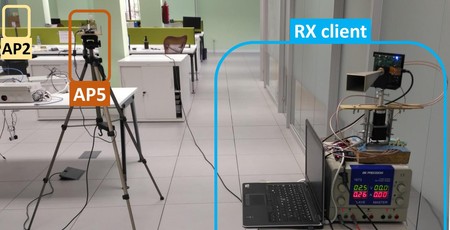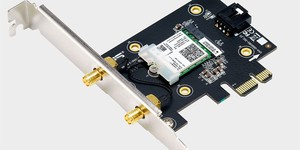Researchers promise fibre-like line-of-sight wireless
June 17, 2019 | 10:58
Companies: #imdea-networks-institute

Researchers at the IMDEA Networks Institute claim to have developed a new communications architecture which could, theoretically, bring the performance of optical fibre networking to millimetre-wave wireless platforms - by using steerable antennas.
Wireless networking offers a wealth of advantages over wired networking, not least of which is being able to expand the number of devices on the network quickly and easily and not having to have an Ethernet cable running to the smartphone in your pocket just so you can check the snooker scores. Where wireless networking falls short of its wired equivalent, though, is in the areas of security and performance - but researchers at the IMDEA Networks Institute claim to have a handle on the latter through the use of smart, steerable antennas driven by a novel algorithm.
'The ground breaking protocols and algorithms we have developed provide key elements for the scalability of future wireless networks,' claims project lead Dr. Joerg Widmer. 'In analogy to the evolution of wired Ethernet from a shared medium to a fully switched network, we envision that future wireless networks will consist of many highly directional LOS (line-of-sight) channels for communication between access points (APs) and end devices.
'In order to deal with the extremely dynamic radio environments where channels may appear and disappear over very short time intervals, Searchlight uses angle information to rapidly align the directional millimetre-wave antennas. The architecture integrates a location system and learns a map of the radio environment, which allows to rapidly select the most suitable access point and antenna beam pattern and allocate radio resource using predicted location as context information. Access points are deployed ubiquitously to provide continuous connectivity even in face of mobility and blockage and the project developed very low overhead network management mechanisms to cope with the high device density.'
According to Dr. Widmer, the resulting system boosts the potential throughput of a compatible wireless system to rival that of optical fibre networks while also improving scalability by reducing the number of devices sharing a single access point. Rather than replacing Wi-Fi, though, Dr. Widmer sees the technology as being better suited to support wireless last-mile and backhaul implementations offered or in development by companies including Alphabet, Facebook, and SpaceX.
More information on the Searchlight project, which was funded by the European Research Council, can be found on the IMDEA Networks website.

MSI MPG Velox 100R Chassis Review
October 14 2021 | 15:04








Want to comment? Please log in.